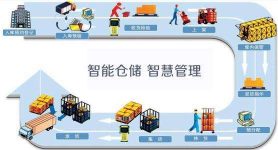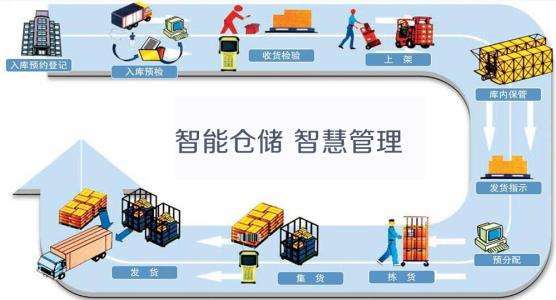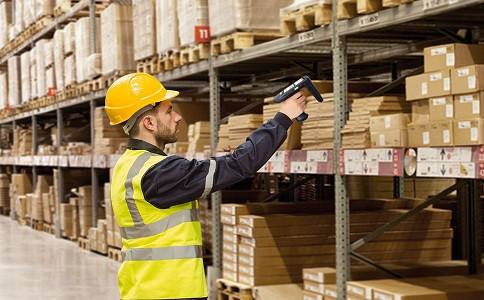
How is it done behind RFID smart inventory?
[ad_1]
RFID technology has become a great weapon for intelligent warehouse management. RFID technology has many characteristics such as security, long-distance, accurate identification, durability, and reusability. RFID technology is indispensable when inventory counting is realized intelligently. The data automation and information collection of each operation link such as warehouse arrival inspection, warehousing, delivery, allocation, shifting, inventory counting, etc., improve the accuracy and efficiency of warehouse management, and provide enterprises in the management of warehousing goods It is more intelligent and simplified.
In an inventory management solution based on the Industrial Internet of Things and RFID, any single inventory item to be tracked will be affixed with an RFID tag. Each label has a unique identification (ID), which contains the coded digital data about the inventory items, such as model number, batch number, etc. The tag is scanned by an RFID reader. After scanning, the reader extracts the tag’s ID and transmits it to the cloud for processing.

RFID (Radio Frequency Identification) system is mainly composed of three parts: RFID tag, RFID antenna and RFID reader.
RFID tags
The ID of an RFID tag contains information about a specific object. It can be attached to any physical surface, including raw materials, finished products, packaging, crates, pallets, etc. In an industrial environment, passive tags are mainly used, that is, tags that do not have a built-in battery. This kind of tag is cheaper, but it needs the energy of the reader to transmit data.
RFID antenna
The RFID antenna receives the radio waves from the reader, provides energy for the operation of the tag, and forwards the radio signal from the tag to the reader.
RFID reader
The RFID reader can be fixed or hand-held. It uses radio waves to read and write tags. The reader captures the ID information written in the tag storage library and transmits them to the cloud together with the data of the reader location and reading time.
Since the value of inventory can be an important part of a company’s assets, inventory data is crucial for the accounting department to ensure that the company’s annual report and tax returns are accurate.

Inventory management based on the Internet of Things lays a solid foundation for the digitization of the manufacturing ecosystem and provides many benefits:
Automation of inventory tracking and reporting
With RFID and the Industrial Internet of Things, inventory managers do not need to spend time on manual tracking and reporting. Each project will be tracked, and its data will be automatically recorded in a big data warehouse. Automated asset tracking and reporting can save 18 hours of working time per month and reduce the possibility of human error.
Continuous visibility into the number, location, and movement of inventory items
The IoT-based inventory management solution provides manufacturers with accurate visibility into the production process of raw materials and components, work-in-progress and finished products by providing real-time updates of item status, location and movement, so that inventory managers can view individual inventory items. Enter or leave a specific location at any time.
Optimize inventory
The more warehouse managers understand inventory, the more likely they are to place the right items in the right place at the right time. With real-time data on the number and location of inventory items, manufacturers can reduce inventory while meeting the needs of customers at the end of the supply chain.
Identify bottlenecks in operations
With real-time data on the location and quantity of inventory items, manufacturers can reveal bottlenecks in the production process and identify machines with lower utilization rates. For example, if part of the inventory tends to accumulate in front of the machine, the manufacturer will think that the machine is underutilized, so special attention is needed.
Optimize delivery cycle
By providing warehouse managers with available inventory quantities and machine learning-driven demand forecasts, solutions based on the Industrial Internet of Things can enable manufacturers to shorten lead times.
With the application and popularization of the new technology of RFID electronic tags, RFID intelligent warehousing management essentially solves the warehousing of major industries and further improves the speed and accuracy of data reading. The use of RFID technology can realize true wireless, long-distance, multi-piece, and dynamic identification functions, greatly improving the efficiency of warehouse management and achieving lean warehouse management.
[ad_2]



